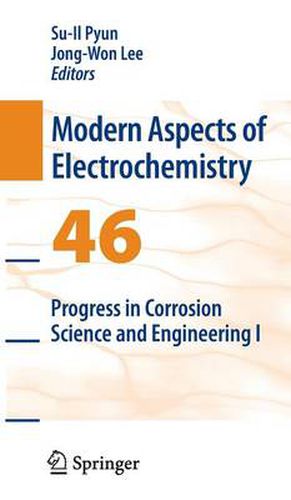Readings Newsletter
Become a Readings Member to make your shopping experience even easier.
Sign in or sign up for free!
You’re not far away from qualifying for FREE standard shipping within Australia
You’ve qualified for FREE standard shipping within Australia
The cart is loading…






This title is printed to order. This book may have been self-published. If so, we cannot guarantee the quality of the content. In the main most books will have gone through the editing process however some may not. We therefore suggest that you be aware of this before ordering this book. If in doubt check either the author or publisher’s details as we are unable to accept any returns unless they are faulty. Please contact us if you have any questions.
The present volume of Modern Aspects of Electrochemistry is composed of four chapters covering topics having relevance both in corrosion science and materials engineering. All of the chapters provide comprehensive coverage of recent advances in corrosion science. The first chapter, by Maurice and Marcus, provides a comprehensive review on the structural aspects and anti-corrosion properties of passive films on metals and alloys. These authors look at recent experimental data collected by in-situ microscopic techniques coupled with electrochemical methods. A detailed description is given of the nucleation and growth of 2-dimensional passive films at earlier stages, their effect on the corrosion properties of metal surfaces, and the nanostructures of- dimensional passive films. On the basis of the experimental data reviewed, the authors present a model for passivity breakdown and pit initiation, which takes into account the preferential role of grain boundaries. In Chapter 2, Takahashi and his co-workers give a specialized account on the electrochemical and structural properties of anodic oxide films formed on aluminum. In addition to the electrochemical corrosion-related problems of anodic oxide films, the chapter reviews state-of-the-art research of nano-/mic- fabrications based on anodizing treatments combined with chemical/mechanical processes such as laser irradiation, atomic force micro-probe processing and thin film deposition techniques.
$9.00 standard shipping within Australia
FREE standard shipping within Australia for orders over $100.00
Express & International shipping calculated at checkout
This title is printed to order. This book may have been self-published. If so, we cannot guarantee the quality of the content. In the main most books will have gone through the editing process however some may not. We therefore suggest that you be aware of this before ordering this book. If in doubt check either the author or publisher’s details as we are unable to accept any returns unless they are faulty. Please contact us if you have any questions.
The present volume of Modern Aspects of Electrochemistry is composed of four chapters covering topics having relevance both in corrosion science and materials engineering. All of the chapters provide comprehensive coverage of recent advances in corrosion science. The first chapter, by Maurice and Marcus, provides a comprehensive review on the structural aspects and anti-corrosion properties of passive films on metals and alloys. These authors look at recent experimental data collected by in-situ microscopic techniques coupled with electrochemical methods. A detailed description is given of the nucleation and growth of 2-dimensional passive films at earlier stages, their effect on the corrosion properties of metal surfaces, and the nanostructures of- dimensional passive films. On the basis of the experimental data reviewed, the authors present a model for passivity breakdown and pit initiation, which takes into account the preferential role of grain boundaries. In Chapter 2, Takahashi and his co-workers give a specialized account on the electrochemical and structural properties of anodic oxide films formed on aluminum. In addition to the electrochemical corrosion-related problems of anodic oxide films, the chapter reviews state-of-the-art research of nano-/mic- fabrications based on anodizing treatments combined with chemical/mechanical processes such as laser irradiation, atomic force micro-probe processing and thin film deposition techniques.